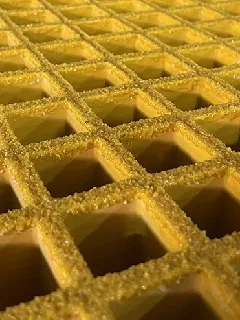loading...
- No. 9, Xingyuan South Street, Dongwaihuan Road, Zaoqiang County, Hengshui, Hebei, China
- admin@zjcomposites.com
- +86 15097380338
- Welcome to visit our website!
fiberglass grating
Understanding Fiberglass Grating A Versatile and Durable Solution
Fiberglass grating is an innovative material that has gained widespread acceptance in various industries due to its exceptional strength, lightweight properties, and resistance to corrosion. Composed of a matrix of fiberglass and resin, this type of grating offers a range of advantages over traditional materials such as steel and wood.
One of the most significant benefits of fiberglass grating is its high strength-to-weight ratio. This characteristic makes it easier to handle and install, resulting in lower labor costs during construction and maintenance. Additionally, its lightweight nature does not compromise its load-bearing capabilities, making it suitable for applications where heavy loads are a concern.
Corrosion resistance is another critical advantage of fiberglass grating. Many industrial environments expose materials to harsh chemicals and moisture, leading to rapid degradation. Fiberglass grating, however, remains unaffected by such corrosive elements, ensuring a longer lifespan compared to metal grating systems. This quality makes it an ideal choice for industries such as wastewater treatment, chemical processing, and food production, where hygiene and durability are paramount.
Safety is also a key consideration when selecting materials for flooring and walkways. Fiberglass grating is inherently slip-resistant, providing secure footing even in wet or oily conditions. This feature is essential in industries where workplace safety is a priority, reducing the risk of accidents and injuries.
fiberglass grating

In terms of design versatility, fiberglass grating is available in various sizes, shapes, and colors, allowing for customized solutions that meet specific project requirements. It can be manufactured in different styles, such as molded grating and pultruded grating, each offering distinct structural characteristics to cater to specific load and performance needs. This adaptability makes fiberglass grating a preferred choice for architects and engineers looking to enhance the aesthetics and functionality of their designs.
Moreover, fiberglass grating is environmentally friendly. The composite materials used are often recyclable, and the manufacturing processes emit fewer pollutants compared to traditional materials. As industries increasingly prioritize sustainability, the use of fiberglass grating aligns with eco-friendly objectives.
In addition to industrial applications, fiberglass grating is finding its way into recreational and commercial settings, including outdoor decks, walkways, and platforms. Its ability to withstand the elements while providing a safe and attractive surface makes it a popular choice for both residential and commercial projects.
In conclusion, fiberglass grating stands out as a robust, safe, and versatile solution that meets the demands of modern industries and commercial applications. With its combination of strength, resistance to corrosion, and design flexibility, it's no wonder that fiberglass grating is rapidly becoming the material of choice across a diverse range of sectors. Whether you are considering it for industrial use or aesthetic enhancements, fiberglass grating represents a smart investment in durability and safety.
-
Transform Your Spaces with FRP Grating SolutionsNewsNov.04,2024
-
The Versatility and Strength of FRP RodsNewsNov.04,2024
-
The Excellence of Fiberglass Water TanksNewsNov.04,2024
-
The Benefits of FRP Grating for Your ProjectsNewsNov.04,2024
-
Elevate Your Efficiency with FRP Pressure VesselsNewsNov.04,2024
-
Welcome to the World of FRP Pressure VesselsNewsOct.12,2024
-
Unveiling the Future of Filtration: Why FRP Filter Vessels are a Game ChangerNewsOct.12,2024
